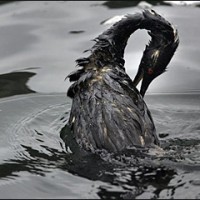
THE EFFECTS OF AN OIL SPILL

By: Nigel Mansen
The recent oil spill in the Gulf of Mexico is creeping towards the ignominy of being the most devastating environmental catastrophe of its kind. Despite innumerable remedial efforts, thousands of barrels of oil are being spewed into the ocean each day posing a very real economic, marine and environmental risk. Experts predict that the effect of this latest ecological disaster will be more pronounced than the 1989, Exxon Valdez Spill.
With 5000 barrels of oil finding its way into the waters of the Gulf, we are only a few days away from the point at which the catastrophe will far supersede the Exxon spill. However, experts of the opinion that BP has significantly understated the figure, which is likely at 25,000 to 80,000 barrels per day, at which rate the Gulf spill is already well beyond the Exxon disaster.
The occurrence of such spills has not stopped even though it has been found that the impact of oil spills is detrimental to the environment and the economy of the surrounding areas. It is very unfortunate though that the interest in them starts waning the moment pictures of the devastation are stopped been relayed on prime channels but the damage it causes to the environment is long lasting and it could be decades before it becomes right. The seriousness of the Gulf oil spill can be ascertained by the fact that BP has already spent millions so far in trying to plug the leak but the U.S government seems to be totally unimpressed with their efforts and it is of the opinion that not adequate measures are been taken to really control the damage and impact of the spill.
What makes oils spills particularly horrendous is the fact that the oil spreads at a surprisingly quick pace when it finds it way into the ocean or waterways. The current and winds helping it to cover greater distances; the oil slick caused by a single gallon can spread over a massive area of many acres in just a few days. For instance, the BP oil spill has already covered a mammoth area of 580 square miles in three days flat.
The mixture of oil and water is known as ‘mousse’, an extremely sticky substance that clings to any marine body and surface that comes in contact with it. Unfortunately, many marine life forms get trapped in it because they simply don’t know to steer clear of it while some may swim to it because it resembles food. The marine fauna that comes into contact with the substance suffers from the following conditions:
• Drowning of birds and hypothermia; the mousse sticks to the feathers of birds; making them heavier and compromising their ability to take flight; the substance also destroys the insulating capability of the feathers making the birds susceptible to hypothermia.
• Hypothermia in young seals: Seal pups are also prone to hypothermia because the substance destroys the insulation provided by the fur on their body
• The oil when ingested can cause instant poisoning and death or it will make the animals fatally sick and if the animals survive the sickness long enough for them to consume by other predators the toxicity will start moving up the food chain. Such environmental disasters can cause a lot of damage and those particularly at risk are marine life forms like corals and shell fish.
Apart from birds, fishes and other marine animals which get affected due to oil spills, the human population too is adversely affected as they live near the shores and will experience the impact of the environmental catastrophe. Some Alaskan communities that relied heavily on fishing and hunting were severely crippled due to the Exxon Valdez spill. The spill not just resulted in the contamination of hunting and fishing ground for years but also affected the tourism in the area. It is hoped that Louisiana will escape the brunt of this massive ecological disaster and that it will not meet the same fate as that of Alaska.










